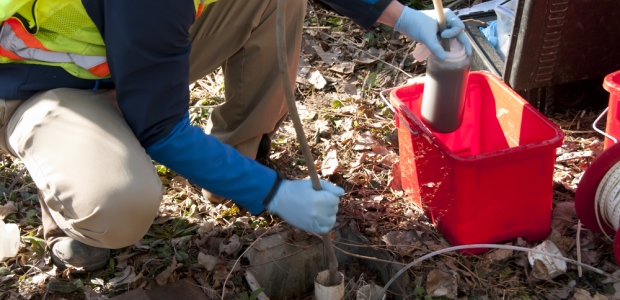
USGS Warns Untreated Groundwater in 25 States Potentially Corrosive
The states with the largest percentage of wells with potentially corrosive groundwater are located primarily in the Northeast, the Southeast, and the Northwest.
The U.S. Geological Survey released a report on its assessment of more than 20,000 wells nationwide that found untreated groundwater in 25 states has a high prevalence of being potentially corrosive. The states with the largest percentage of wells with potentially corrosive groundwater are located primarily in the Northeast, the Southeast, and the Northwest.
USGS noted the report is unrelated to the drinking water problems experienced in Flint, Mich., because its problems were related to treated surface water from the Flint River.
Two indicators of potential corrosivity were combined to determine that corrosive groundwater occurs in all 50 states and the District of Columbia. Corrosive groundwater, if untreated, can dissolve lead and other metals from pipes and plumbing fixtures. "The corrosivity of untreated groundwater is only one of several factors that may affect the quality of household drinking water at the tap," said Don Cline, USGS' associate director for Water. "Nevertheless, it is an essential factor that should be carefully considered in testing for water quality in both public and private supplies nationwide."
Public water supplies are regulated by EPA, but maintenance, testing, and treatment of private water supplies are homeowners' responsibility. About 44 million people in the United States get their drinking water from private wells, according to USGS, yet surveys indicate many homeowners are unaware of some basic testing they should do to help ensure safe drinking water in their homes.
"Fortunately, in most areas of the country and with appropriate safeguards, the majority of homeowners can get good-quality drinking water from private wells," said Stephen Moulton II, chief of the USGS National Water-Quality Program. "But this study is a good reminder that prudent, routine testing of the water, including its interaction with the water supply system, is an essential first step so homeowners and their families can confidently drink water from their faucets."
Signs of corrosive water causing leaching of metals can include bluish-green stains in sinks, metallic taste to water, and small leaks in plumbing fixtures. According to the agency, potential sources of lead in homes include:
- lead pipes or fittings used in homes built prior to 1930
- lead solder used in copper fittings in homes built prior to the late 1980s
- "lead-free" brass components, which in all states except California may have contained up to 8 percent lead, prior to 2014
- galvanized steel that contained 0.5 to 1.4 percent lead prior to 2014
"USGS has consistently monitored the water quality of the nation's groundwater for over three decades by analyzing representative water samples," said Moulton. "Recent public health and water quality issues underscore the responsibility for us to report the possibility that regional geologic characteristics of groundwater could potentially affect household water systems, resulting in significant implications for public health."
The report, "Assessing the Potential Corrosivity of U.S. Groundwater," is available here.